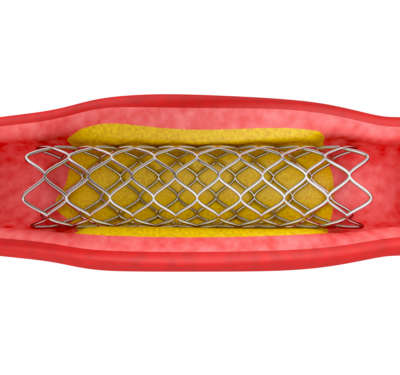Opening the heart and absorbing the pain
Are new dissolvable stents that keep heart vessels open worth their cost?
Published online 30 June 2016

Stents may sometimes be inserted into blood vessels to keep them open in cases of atherosclerosis, but may cause the formation of blood clots.
© Mile Atanasov / Alamy Stock Photo
To treat patients suffering from atherosclerosis, heart surgeons may insert tiny tubes, or stents, into blocked blood vessels that feed the heart, providing support and allowing blood to flow freely. There are different kinds of stents in use, but some of the most recent developments are in biodegradable stents, which are absorbed into the body after a certain period of time. Non-degradable metal stents carry a risk of forming blot clots in the vessels, which is deterred by coating them with a slowly released drug to prevent the recurrence of blockage.
Researchers in the United States reviewed three recent trials, which compared the safety and efficacy of the first-generation biodegradable stent, Absorb Bioresorbable Vascular Scaffold (Absorb BVS), with the latest drug-eluting stent, Xience1.
A clinical trial conducted in the USA involved 2008 cardiac patients, one-third of whom were treated with Absorb BVS while the rest received Xience. Failure of the trial was defined as “target lesion failure”, leading to one or more of patient death, death of heart tissue served by the treated vessel, or revascularization of heart tissue served by the treated vessel because it was unable to supply it with enough blood.
The trial did not indicate that Absorb BVS was equal in performance to Xience. Rather, it showed that Absorb BVS was at least not worse; in other words it was “non-inferior” after one year of insertion. Target lesion failure occurred in 7.8% of Absorb BVS-treated patients compared to 6.1% in Xience patients. The team believes long-term evaluation of these patients will be important to determine whether Absorb BVS-treated patients fare well due to encouraging observations that this stent also helps blood vessels repair themselves.
Two other trials conducted in China and Japan, involving 480 and 400 cardiac patients respectively, measured blood vessel diameter after the procedure and then one year later. Both trials also indicated that Absorb BVS was non-inferior to Xience.
Notably, all three trials only involved blood vessel lesions of moderate complexity. More complex lesions were excluded.
The researchers, from Emory University School of Medicine in Atlanta, Georgia, USA, recommend in their paper published in the journal Global Cardiology and Practice that experienced cardiologists use bioabsorbable stents such as Absorb BVS only in selected lesions until future design improvements are made.
Critically, bioresorbable stents are twice the price of drug-eluting stents currently available on the market. This raises the obvious question about the merit of using the more expensive technology when there is no evident superiority over less costly devices, the researchers write.
Reference
- Gogas, B. D., King, S. B. III & Samady H. Bioresorbable polymeric scaffolds for coronary revascularization: lessons learnt from ABSORB III, ABSORB China, and ABSORB Japan. Glob. Cardiol. Sci. Pract. 2015, 62 (2015). | article
DOI: 10.1038/qsh.2016.118

